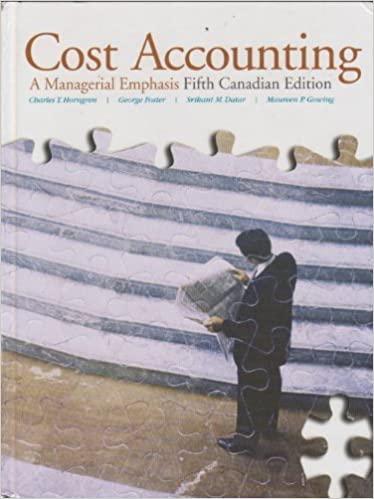Multinational transfer pricing and taxation. (Richard Lambert, adapted) Deutschland @ Machines Inc., headquartered in Canada, manufactures special-purpose
Question:
Multinational transfer pricing and taxation. (Richard Lambert, adapted) Deutschland @
Machines Inc., headquartered in Canada, manufactures special-purpose welding machines. It | Operating income if sold has two marketing subsidiaries, one in Vietnam and one in Spain, which sell its products. in Vietnam, $360,000 Deutschland Machines is building one new machine, at a cost of $600,000. There is no market for the equipment in Canada. The equipment can be sold in Vietnam for $1,200,000, but the subsidiary would incur transportation and modification costs of $240,000. Alternatively, the equipment can be sold in Spain for $1,140,000, but the subsidiary would incur transportation and modification costs of $300,000. The Canadian company can sell the equipment to either its Vietnamese subsidiary or its Spanish subsidiary but not to both.
Deutschland Machines and its subsidiaries operate in a very decentralized manner. Managers in each subsidiary have considerable autonomy, with each manager interested in maximizing company income.
REQUIRED 1. From the viewpoint of Deutschland Machines and its subsidiaries taken together, should the company manufacture the equipment? If it does, where should it sell the equipment to maximize total operating income? What would be the operating income for Deutschland Machines and its subsidiaries from the sale? Ignore any income tax effects.
2. What range of transfer prices will result in achieving the actions determined to be optimal in requirement 1? Explain your answer.
3. The effective income tax rates for this transaction are as follows: 40% in Canada, 20% in Vietnam, and 60% in Spain. The tax authorities in the three countries are uncertain about the cost of the intermediate product and will allow any transfer price between
$600,000 and $840,000. If Deutschland Machines and its subsidiaries want to eae re maximize after-tax operating income,
(a) should’ the equipment be manufactured ystems, eee ore nie and
(b) where and at what price should it be transferred?
4. Now suppose managers act autonomously to maximize their own subsidiary after-tax operating income. The tax authorities will allow transfer prices only between $600,000 and $840,000. Which subsidiary will get the product and at what price? Is your answer the same as your answer in requirement 3? Explain why or why not.LO1
Step by Step Answer:

Cost Accounting A Managerial Emphasis
ISBN: 9780135004937
5th Canadian Edition
Authors: Charles T. Horngren, Foster George, Srikand M. Datar, Maureen P. Gowing





